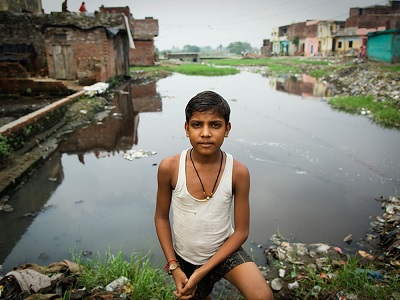About the course
The course on Integrating Climate Change in UNICEF Programming is structured around four core modules:
Module 1 presents a brief summary on the impacts of climate change on children.
Module 2 covers tools to integrate climate change into country planning and programming efforts. It provides examples of how planning tools have been used to integrate climate change into country office programming in WASH and Education.
Module 3 showcases key principles for designing climate programmes and projects and accessing climate finance.
Module 4 summarizes what participants have learnt throughout the course and provides some final conclusion and food for thought. This module also includes the final learning assessment quiz which, if completed successfully, will reward participants with a course completion certificate.
Learning Objectives
By the end of Module 1, you should be able to:
- Explain how climate change can affect children.
- Describe how measures to build climate resilience and mitigate climate change can benefit children.
- Illustrate key instruments and good practices for empowering children to act on climate change.
- Identify opportunities for protecting children’s rights in a changing climate.
By the end of Module 2, you should be able to:
- Describe the technical tools and resources to integrate climate change into each phase of the Country Programme Cycle, including the Climate Landscape Analysis for Children (CLAC), Guidance on Risk-Informed Programming (GRIP), and the Situation Analysis (SitAn).
- Explain the global frameworks, interagency and national tools and resources available for integrating climate change into the Strategic Planning phase of the Country Programme Cycle.
- Describe the sector tools for integrating climate change into the Strategic Planning phase of the Country Programme Cycle.
- Analyze examples of how planning tools are used to integrate climate change into country office programming in WASH and Education.
By the end of Module 3, you should be able to:
- Define climate change finance.
- Provide an overview of the global climate finance landscape.
- Recognize key principles for designing successful climate change finance programmes
- List at least three sources of climate finance that are relevant to their country.
By the end of Module 4, you should be able to:
- Have a clear understanding about the climate change impacts on children and young people, tools and frameworks available and potential sources of funding.
Audience
UNICEF staff (country offices, regional offices, and HQ)
UNICEF National Committees staff and volunteers
UNICEF partners, including government, civil society, and the private sector
Length
It takes about 168 minutes to complete the course.
Methodology
The course consists of four self-paced modules with interactive content and a final quiz.
Structure
Module 1: Why Climate Change Matters for UNICEF
- Lesson 1: Climate change is a children's issue
- Lesson 2: It starts with you!
Module 2: Stimulating Engagement
- Lesson 1: Technical Tools and Resources
- Lesson 2: Progress in Viet Nam: Integrating Children into Climate Change Education Programming
Module 3: Understanding Means of Implementation
- Lesson 1: Financing Climate Change Action
Module 4: Wrap Up and Review
Contact details
For content-related questions, contact rlopezrello@unicef.org
For questions about technical issues, contact agora@unicef.org
